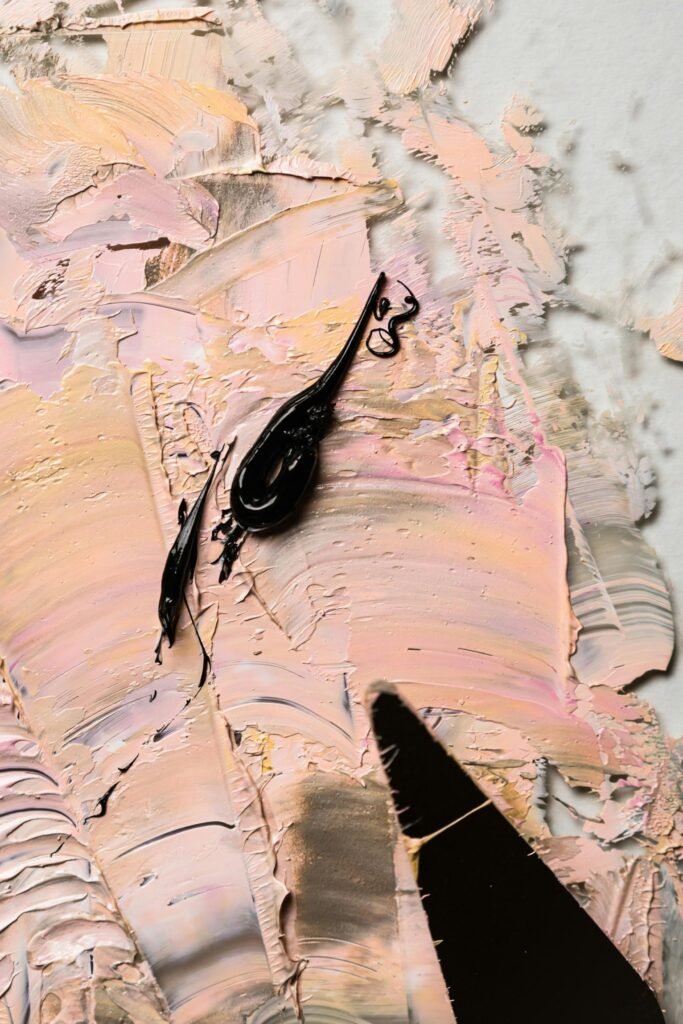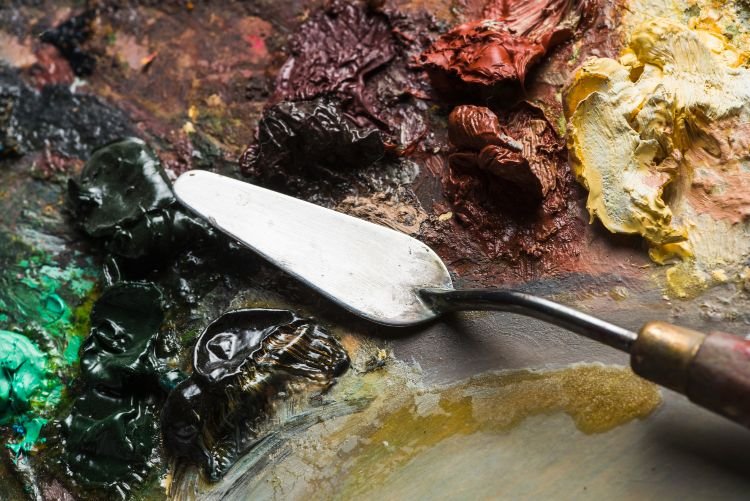If you’ve ever attended a sip and paint event, you know that it’s a fantastic way to unwind, unleash your inner artist, and enjoy a glass of your favorite beverage. These painting classes have gained immense popularity over the years, offering people of all skill levels an opportunity to create their own masterpieces while having a great time. But have you ever considered taking your sip and paint experience to the next level by experimenting with palette knife painting? In this blog post, we will embark on an in-depth exploration of palette knife painting during sip and paint sessions. So, grab your favorite beverage, get your palette knives ready, and let’s dive into the world of sip and paint with palette knives.
What is Palette Knife Painting?
Palette knife painting is a unique and fascinating painting technique that deviates from the traditional use of paintbrushes. Instead of using brushes, artists employ a palette knife, a flat, metal or plastic tool with a handle, to apply and manipulate paint directly onto the canvas. This approach yields textured, vibrant, and impasto-like effects that can add a new dimension to your artwork.
The Essentials for Sip and Paint with Palette Knives
Before we delve into the tips and techniques for palette knife painting during a sip and paint event, it’s essential to gather the necessary supplies. Here’s a list of what you’ll need to get started:
- Palette Knives: As the name suggests, palette knives are the central tool for this technique. You can find various types, but it’s recommended to have a selection of different shapes and sizes for versatility.
- Acrylic Paints: Acrylic paints are an ideal choice for sip and paint with palette knives. They dry quickly, allowing you to layer colors and create texture effectively. Ensure you have a range of colors to work with.
- Canvas: Choose the size and shape of the canvas that suits your artistic vision. A common choice is a square or rectangular canvas, but feel free to experiment with different shapes.
- Easel: An easel will provide stability for your canvas and allow you to work comfortably.
- Palette: You’ll need a palette to mix your acrylic paints. A palette with a flat surface is best for palette knife painting.
- Cups for Beverages: Since it’s a sip and paint event, don’t forget your favorite beverages to enjoy while you paint!
With your supplies ready, let’s explore some valuable tips and techniques for palette knife painting during a sip and paint event.

Palette Knife Painting Tips
1. Start with a Sketch
Before you begin applying paint with your palette knife, it’s a good idea to create a basic sketch on your canvas. This sketch will serve as a rough guideline for your painting and help you establish the composition. Use a pencil or charcoal to lightly draw your subject or design on the canvas.
2. Choose the Right Palette Knife
Palette knives come in various shapes and sizes, each suitable for different tasks. Experiment with different knives to see which one works best for your style. Larger knives are great for covering larger areas, while smaller ones are perfect for adding fine details.
3. Mix Your Colors
Acrylic paints can be mixed on your palette to create a wide range of colors. Use your palette knife to blend and mix the colors until you achieve the desired shades. This step allows you to have a more extensive color palette for your sip and paint session.
4. Apply Paint Thickly
One of the distinctive features of palette knife painting is the texture it creates. Apply the paint thickly with the knife, allowing it to stand out from the canvas surface. The thickness of the paint can add depth and dimension to your artwork.
5. Experiment with Texture
Don’t be afraid to experiment with different textures. You can create a variety of effects, from smooth and subtle to bold and impasto. Vary the pressure and direction of your palette knife strokes to achieve unique textures in your artwork.
6. Layering and Blending
Layering is an essential aspect of palette knife painting. As acrylic paints dry quickly, you can apply subsequent layers without waiting for the previous ones to dry completely. This allows you to blend colors and create depth in your painting.
7. Embrace Mistakes
One of the beautiful aspects of palette knife painting is its forgiving nature. If you make a mistake or don’t like a particular area of your painting, you can easily scrape it off with the palette knife and start anew. Don’t be afraid to take risks and explore your creativity.
8. Focus on Composition
Even in the relaxed atmosphere of a sip and paint event, pay attention to the composition of your painting. Consider the placement of elements, balance, and focal points. A well-composed painting will stand out and make a more significant impact.
9. Use a Variety of Strokes
Don’t be afraid to experiment with different textures. You can create a variety of effects, from smooth and subtle to bold and impasto. Vary the pressure and direction of your palette knife strokes to achieve unique textures in your artwork.
10. Be Patient
While acrylics dry quickly, it’s still essential to be patient during your sip and paint session. Take your time, step back to assess your work, and make adjustments as needed. Don’t rush the process, as palette knife painting can be a rewarding but deliberate art form.
Palette Knife Painting and Sip and Paint
Now that we’ve covered some fundamental palette knife painting tips, let’s explore how this technique can be incorporated into a sip and paint event. Sip and paint sessions are typically social, relaxed gatherings, making them an ideal setting to experiment with palette knives. Here’s how you can enhance your sip and paint experience with palette knives:
1. Choose a Themed Event
Many sip and paint events have themes or specific subjects for the participants to paint. When selecting a themed event, consider one that aligns with the style of palette knife painting. Themes like landscapes, abstract art, or floral compositions are excellent choices for this technique.
2. Provide Adequate Instruction
If you’re hosting a sip and paint event that includes palette knife painting, it’s essential to provide clear instructions and demonstrations. Offer guidance on how to use the palette knife effectively and encourage participants to experiment with different strokes and textures.
3. Emphasize Creativity
Palette knife painting is all about creative expression. Encourage your participants to go beyond the conventional brushwork and explore their artistic instincts. Create an atmosphere where mistakes are seen as opportunities for artistic growth.
4. Offer a Variety of Palettes and Colors
To enhance the creative process, provide a wide range of acrylic paint colors and palette knives. Having options allows participants to experiment with different color schemes and find the palette knife that suits their style.
5. Create a Relaxing Ambiance
Sip and paint events are as much about the “sip” as they are about the “paint.” Make sure you create a relaxed, social atmosphere with music, refreshments, and, of course, beverages of choice. This setting will encourage participants to let their creativity flow.

Famous Palette Knife Painters
If you’re looking for inspiration and want to see what can be achieved with palette knife painting, consider exploring the works of famous artists known for their mastery of this technique. Here are a few notable artists to get you started:
1. Leonid Afremov
Leonid Afremov, a Belarusian-Israeli painter, was famous for his distinctive palette knife style. His vibrant, impressionistic cityscapes and landscapes are instantly recognizable and celebrated for their vivid colors and textures.
2. Bob Ross
The legendary Bob Ross, known for his “Joy of Painting” TV series, often used a palette knife to create stunning landscapes and nature scenes. His calm and soothing approach to painting made him an icon in the world of art.
3. Vincent van Gogh
While Vincent van Gogh is primarily associated with his iconic brushwork, he occasionally employed palette knives to add texture and dimension to his works, such as in his famous “Starry Night.”
4. Gustave Caillebotte
Gustave Caillebotte, a French Impressionist painter, utilized palette knife techniques to create textured surfaces in his works, adding depth and intrigue to his urban scenes and landscapes.
Conclusion
Sip and paint events are an enjoyable way to explore your artistic side, and incorporating palette knife painting can take your experience to the next level. Whether you’re a seasoned artist or a complete beginner, the world of palette knife painting offers endless possibilities for creative expression.
So, the next time you attend a sip and paint event, grab your palette knives, and get ready to sip, socialize, and create stunning works of art with textured depth and vibrant colors. Cheers to a sip and paint experience filled with artistic adventure!

